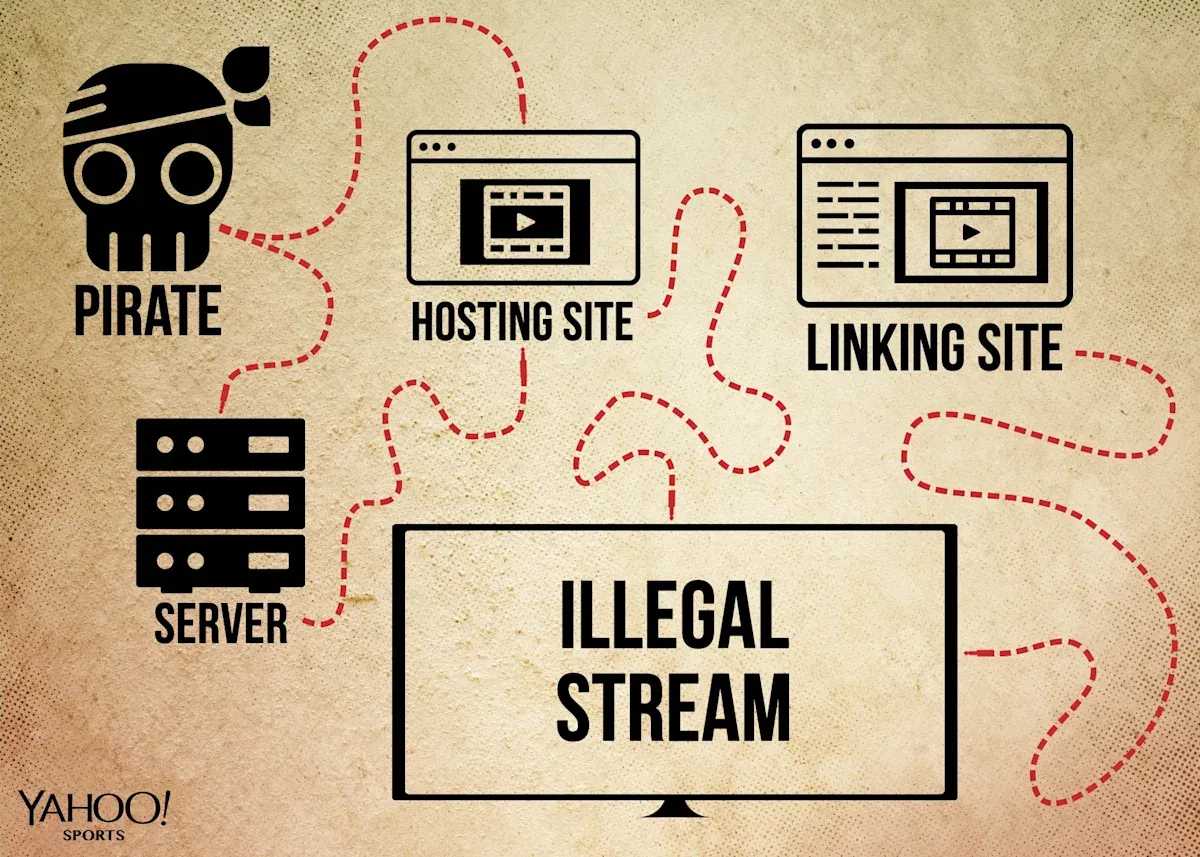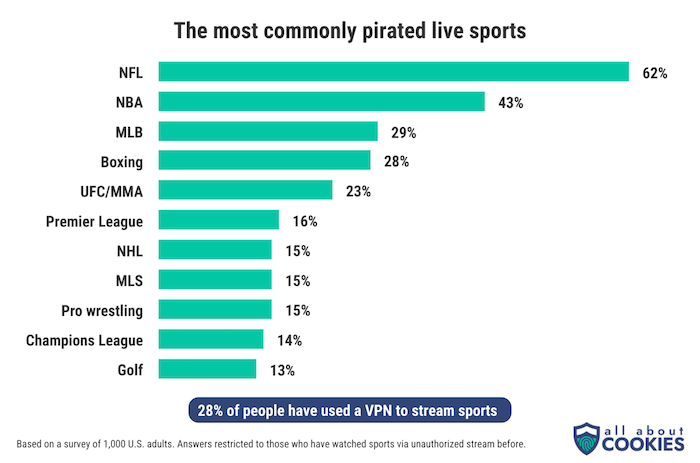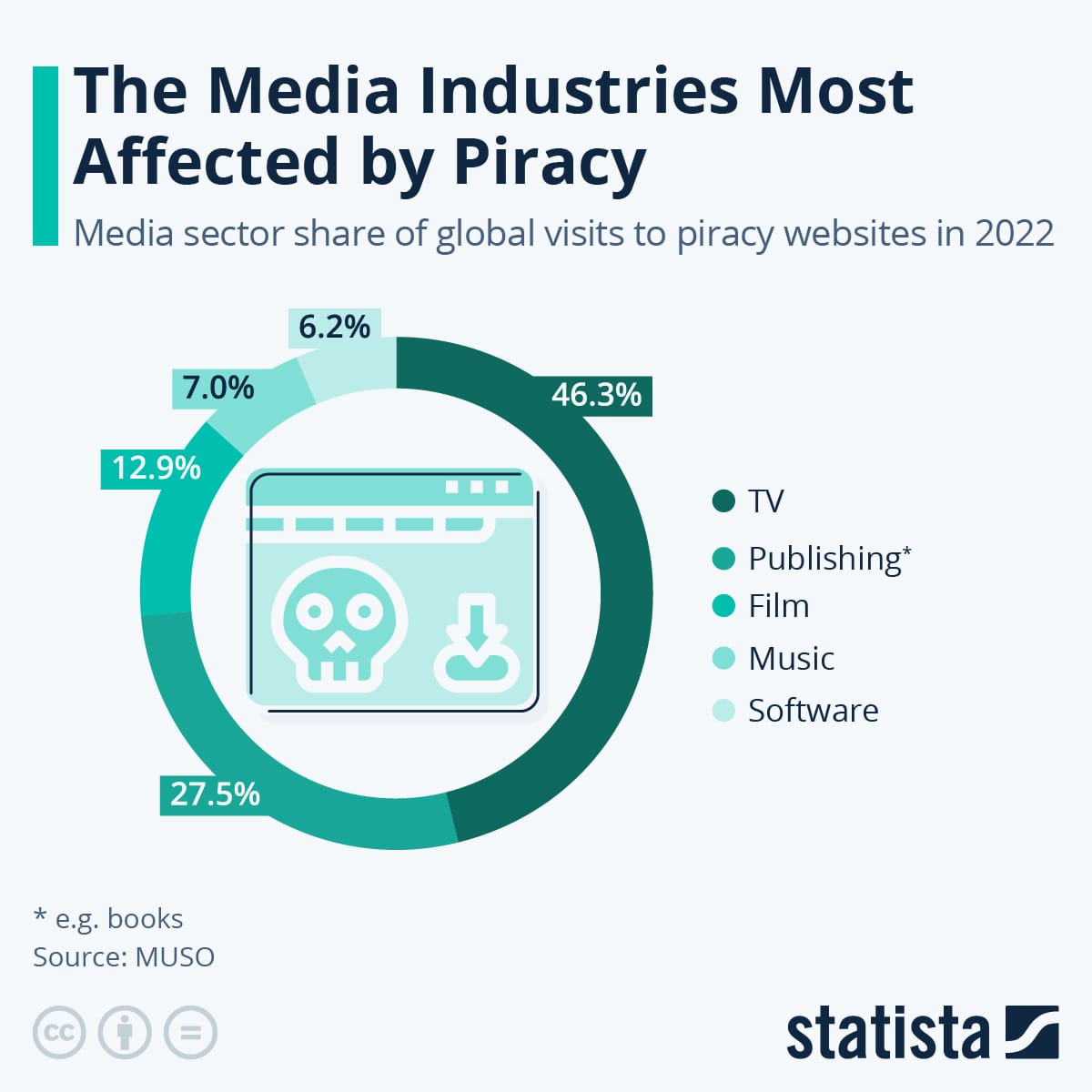The Final Whistle: How the World’s Largest Illegal Sports Streaming Network Was Busted
The takedown of Streameast, the world’s largest illegal sports streaming network, marks a significant victory.

Written by Lavanya, Intern, Allegedly The News
CAIRO, EGYPT, September 5, 2025
The digital underground has been dealt a major blow. In a landmark, multi-national operation, the notorious illegal live sports streaming network, Streameast, has been officially shut down. This is not just a temporary disruption but a decisive, coordinated takedown that has sent shockwaves through the world of digital piracy. The operation, led by Egyptian authorities in collaboration with the Alliance for Creativity and Entertainment (ACE), has successfully dismantled what was a massive, multi-million dollar criminal enterprise. The network, which boasted over 1.6 billion visits in the last year alone, offered unauthorized access to a treasure trove of live sports content, from European soccer to American football, siphoning billions in revenue from legitimate broadcasters and leagues.
The Anatomy of a Global Piracy Kingpin
Streameast was far more than a simple website; it was a sophisticated, distributed network designed to be resilient against traditional enforcement methods. Its success lay in its ability to adapt and provide a seemingly limitless supply of content to a global audience.
How the Network Operated & Its Technology
The core of Streameast's business was a process known as re-streaming, which involved illegally acquiring and rebroadcasting premium live sports content. This was accomplished through a meticulously engineered technological pipeline:
- Content Ingestion: The operators would first acquire live broadcast feeds. This was done in various ways, from illegally tapping into satellite signals to using hacked credentials for legitimate streaming services like DAZN, ESPN+, and Sky Sports. They utilized advanced software and hardware to capture these encrypted feeds, bypassing the very security measures put in place to protect them.
- Transcoding and Distribution: Once a feed was ingested, it was rapidly transcoded into different formats and resolutions. This allowed Streameast to cater to a global audience with a wide range of internet speeds, ensuring a smooth, buffer-free experience for millions of users. The streams were then pushed through a vast, decentralized Content Delivery Network (CDN). This distributed server network was a key to their longevity, as it meant law enforcement couldn't simply take down a single server to disrupt the entire operation.
- Domain Hopping and Resilience: One of Streameast's most effective defense mechanisms was its "whack-a-mole" approach to domain management. The network operated on over 80 interconnected domains and maintained a massive reservoir of hundreds of alternative websites. When one domain was seized or blocked, a new one would pop up almost instantly, allowing them to remain online and frustrate anti-piracy efforts for years. The sheer volume of domain names and their rapid rotation made it incredibly difficult for authorities to keep pace.
- Monetization: The network was a lucrative venture, generating millions in revenue through a mix of methods. This included a high volume of pop-up ads and banner ads from shady advertisers, as well as a more sophisticated model that involved a shell company in the UAE allegedly used to launder millions of dollars in advertising revenue. The funds were then reportedly used to acquire real estate and other assets.
The Takedown: A New Era of Collaboration
The operation that finally brought Streameast down was a textbook example of modern, international anti-piracy enforcement. It was a joint effort that spanned continents, leveraging legal frameworks and technological intelligence.
- The Culmination: The investigation, led by the Alliance for Creativity and Entertainment (ACE) in close cooperation with Egyptian law enforcement, culminated in late August 2025. Raids were conducted in El-Sheikh Zaid, a city near Cairo, leading to the arrest of two individuals suspected of being the primary operators behind the Streameast network.
- Key Evidence Seized: The raids were highly successful, yielding crucial evidence, including financial records, computers, and smartphones linked to the operation. Investigators also uncovered links to a shell company in the UAE and found over $200,000 in cryptocurrency, providing a clear trail of the criminal enterprise's financial activities.
- Impact on the Pirate Ecosystem: The immediate impact was that all Streameast domains, which had been a go-to for millions of sports fans, now redirect to ACE's "Watch Legally" page. This physical takedown of key personnel and infrastructure, combined with the domain seizures, has temporarily created a massive void in the pirate sports streaming landscape, disrupting a criminal operation that had accumulated over 1.6 billion visits in the last year alone.
The Financial Bloodletting & Who Benefits Now?
The shutdown of Streameast is a major win for the legitimate sports broadcasting ecosystem. The financial losses to sports leagues and broadcasters due to piracy are staggering and well-documented.
- Financial Devastation: A 2024 report by the U.S. Chamber of Commerce and ACE estimated that online streaming piracy costs the U.S. economy alone nearly $30 billion annually and is responsible for the loss of over 230,000 jobs. Globally, the losses are even more immense, with estimates soaring to over $70 billion annually. The takedown of a single, massive network like Streameast will help staunch some of this bleeding, even if only for a time.
- A Win for All Players: The primary beneficiaries are the major broadcasters and leagues. This includes giants like the NFL, NBA, Premier League, and platforms like DAZN, ESPN+, and Hotstar. By removing a major free competitor, the value of their multi-billion-dollar broadcast rights is reinforced, potentially leading to an increase in legitimate subscriptions. It also helps protect the overall sports ecosystem, ensuring that money flows to the athletes, teams, and production crews that create the content.

The Persistent Challenge of Digital Piracy
Despite this significant victory, the war against illegal streaming is far from over. Several factors ensure that piracy remains a persistent and evolving challenge.
- High Cost of Legal Content: For many fans, especially in a world of content fragmentation, the combined cost of subscribing to multiple streaming services (like ESPN+, Peacock, Paramount+, and DAZN) to watch all their favorite sports is prohibitively high. This economic barrier is a primary driver of piracy, creating a market for illegal providers.
- The "Whack-a-Mole" Dilemma: As seen with previous takedowns of Streameast, pirate operators are incredibly resilient. They can quickly re-establish new domains and servers, making a definitive, permanent shutdown a near-impossible feat. This cat-and-mouse game requires constant vigilance and resource expenditure from anti-piracy groups.
- Viewer Apathy and Security Risks: Many viewers don't view illegal streaming as a serious crime, dismissing it as a victimless act. However, the reality is that these sites are often riddled with malware, viruses, and phishing scams, putting viewers' personal and financial data at significant risk. The money generated from these sites is also frequently tied to larger criminal organizations.
Prime Targets: The Most Pirated Sports Events
Certain sports events are consistently at the top of the piracy list due to their global popularity and high cost.
- Pay-Per-View (PPV) Events: Boxing and MMA title fights are the ultimate piracy targets. The high one-time fee for a single event makes the free, albeit illegal, alternative incredibly tempting for fans.
- Major Soccer Leagues: The English Premier League and the UEFA Champions League are global phenomena. With their rights sold to different broadcasters in various regions, fans often resort to illegal streams to bypass geo-restrictions and avoid multiple subscription fees.
- North American Sports: The NFL, NBA, and MLB are also heavily pirated, especially for "out-of-market" games that are not available on local channels and require expensive premium packages like NFL Sunday Ticket. The sheer demand for these leagues creates a massive market for pirate networks to exploit.
The View from the Frontline: Fighting Piracy with Innovation
Major streaming platforms and leagues are not just waiting for law enforcement to act; they are actively developing their own solutions to fight piracy.
- DAZN: The global sports streaming service has invested heavily in anti-piracy technology. They've partnered with cybersecurity firms like Irdeto to implement forensic watermarking. This technology embeds unique, invisible codes into each stream, allowing DAZN to trace pirated content back to its original source. This real-time intelligence enables them to issue immediate takedown notices or even pursue legal action against the perpetrators.
- ESPN+ and Hotstar: Both platforms have focused on making their services more accessible and user-friendly. In a bid to fight piracy, Hotstar in India introduced a tiered pricing model, including a low-cost, ad-supported plan, to attract consumers who might otherwise turn to illegal streams. They also use advanced AI and machine learning to detect and block pirated content in real-time. ESPN+ has focused on providing exclusive, high-quality content that illegal services simply can't match, along with rapid-response teams dedicated to removing illegal streams as soon as they appear.
The Dark Web's Role: An Unseen Battleground
While the public face of piracy is a free streaming website, the operational heart of these networks often lies in the shadows of the dark web.
- Operational Anonymity: The dark web provides a crucial layer of anonymity for piracy kingpins. They use it to communicate securely, trade stolen content, and coordinate their activities without being monitored by traditional law enforcement.
- A Marketplace for Illicit Goods: The dark web is a bustling marketplace where stolen credentials, hacking tools, and access to private networks are bought and sold. This is where pirate networks acquire the initial means to illegally ingest and re-stream content from legitimate sources.
- Financial Hub: The use of cryptocurrency on the dark web allows these networks to launder millions in ill-gotten gains with relative anonymity, making it incredibly difficult for authorities to track their finances. The Streameast investigation's success in seizing cryptocurrency assets is a major breakthrough in this regard.

A Look Back: From Physical to Digital
The modern fight against piracy is a direct evolution of historic anti-piracy efforts. The strategy has shifted dramatically from physical to digital.
- Early Days of Piracy: The "Golden Age of Piracy" for copyright holders was the era of counterfeit CDs, DVDs, and VHS tapes. Law enforcement's strategy was largely reactive: raid warehouses, seize physical goods, and arrest individuals involved in manufacturing and distribution.
- The Digital Shift: The advent of the internet forced a complete paradigm shift. The battle moved from physical goods to data streams and websites. Today’s enforcement strategies, as seen in the Streameast case, are highly collaborative and technologically advanced. They rely on global alliances like ACE, working with Interpol and national law enforcement agencies to conduct simultaneous raids across jurisdictions and use forensic technology to trace digital fingerprints. The focus has moved from just taking down a website to identifying and prosecuting the individuals and organizations behind them.
The Future of the Game
The takedown of Streameast is a significant tactical victory, but the strategic war continues. As one head of the piracy hydra is severed, another will almost certainly grow in its place. The long-term solution lies not just in enforcement but in a fundamental re-evaluation of the sports broadcasting model. Ultimately, the goal is not just to defeat the pirates but to create a legal streaming environment so compelling, convenient, and affordable that piracy loses its appeal entirely. The battle for the future of sports broadcasting is being fought not just in courtrooms and on the dark web, but in the living rooms of fans worldwide.
Where Do We Go From Here?
- The Cost Conundrum: Can sports leagues and broadcasters consolidate their content into more affordable, comprehensive packages to reduce the incentive for piracy? Is a lower-cost, ad-supported model a viable path to winning back pirated viewers?
- Technological Arms Race: Will the technological sophistication of anti-piracy groups and platforms eventually outpace the pirate networks, making illegal streaming a thing of the past? Or will pirates always find new ways to bypass the latest security measures?
Sources
The Alliance for Creativity and Entertainment (ACE), The Times of India, U.S. Chamber of Commerce, The Associated Press, SportsPro, Yahoo News Singapore, and The Economic Times.




